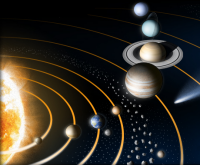 In this month's edition:
In this month's edition:
- Planetary Skylights: Conjunction of Venus and Saturn
- Comet C/2013 US10 Catalina: Find with binoculars
- Closed Season on Meteor Showers
- February 2016 Sky Charts
- Log in to post comments
 In this month's edition:
In this month's edition:

Prof Tom Marsh
(Warwick University)
In the first of four summaries from Leeds Astromeet 2015, Mark tells us about Prof. Tom Marsh's talk, subtitled "Delving the depths of white dwarfs, neutron stars and black-holes".
Tom and his team specialise in the high-speed data acquisition and analysis techniques needed to track them. His major project of the last few years has been the use of ULTRACAM, a high-speed CCD camera, but is now working on a successor instrument, bigger and better, with more channels called HiPERCAM. [Read more about Astromeet 2015 Lecture 1: Astronomy at High-Speed]
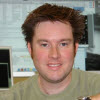
Dr Richard Massey
(Durham University)
Dr Massey’s subject matter was something we have visited several times over the years, what is stuff made of. Chemists would say elements; atoms molecules etc, Physicists would say; muons, quarks, bosons, up and down particles etc. Ask an astronomer and he would suggest 4% baryonic or ordinary matter, 23% dark matter and 73% dark energy! [Read more about Astromeet 2015 Lecture 2: What's the (Dark) Matter?]

Dr Melvin Hoare
(Leeds University)
The Square Kilometre Array (SKA) project is an international effort to build the world’s largest radio telescope, with eventually over a square kilometre (one million square metres) of collecting area. The scale of the SKA represents a huge leap forward in research and development towards building and delivering a unique instrument and preparations are now well under way. [Read more about Astromeet 2015 Lecture 3: Developments in Radio Astronomy]
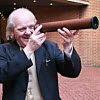
Dr Alan Chapman
(Oxford University)
This was Dr Chapman’s personal homage to Patrick, not his life story as such, but an attempt to compare his likeness with other great science communicators, publishers and educators of the last 300 years. [Read more about Astromeet 2015 Lecture 4: The Life of Sir Patrick Moore]
 Given a clear and dark sky, February is a great time to become acquainted with the winter celestial dome. The southern aspect is especially studded with stellar jewels.
Given a clear and dark sky, February is a great time to become acquainted with the winter celestial dome. The southern aspect is especially studded with stellar jewels.
Of these no star catches the eye more than Sirius, brightest in the entire night sky. Also known as the ‘Dog star’, Sirius lies in Canis Major - the Great Dog, a constellation that from the UK just clears the horizon. Because Sirius is both brilliant and appears relatively low, the effects of scintillation (twinkling) are very pronounced... [Read more about February Tales - A Tale of Two Dogs]
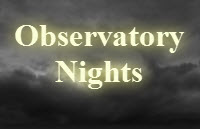 Well, err, mmm, very little to report really, just about every Sunday night has been rained off, clouded out or blown away. But don't despair... [Read more about Observatory Nights]
Well, err, mmm, very little to report really, just about every Sunday night has been rained off, clouded out or blown away. But don't despair... [Read more about Observatory Nights]
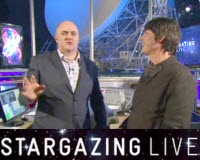 Hope you managed to catch the BBC Stargazing live shows in January. With Major Tim Peake’s stay on ISS already a month old, the emphasis was very much on the work he is doing, astronaut training, and the future direction of manned space flight... [Read more about Stargazing Live]
Hope you managed to catch the BBC Stargazing live shows in January. With Major Tim Peake’s stay on ISS already a month old, the emphasis was very much on the work he is doing, astronaut training, and the future direction of manned space flight... [Read more about Stargazing Live]